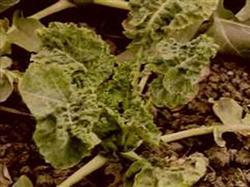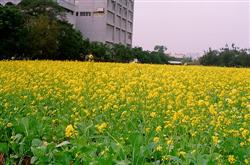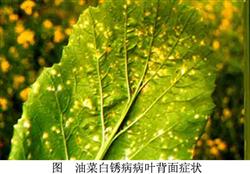Rape virus disease

[Distribution and damage] All rape producing areas in the country have different degrees of occurrence, and generally winter rape areas are more seriously affected than spring rape areas. The disease was caused by TuMV, CMV, TMV and YMV, which were infected individually or in combination. Generally, the yield is reduced by 20%-30%, and in serious cases, it is more than 70%. The oil content of seeds decreased by 7%. [Symptoms] Different types of rape show different symptoms. The main symptoms of Brassica napus were yellow spot type, mosaic type and stripe type, while those of Brassica napus and Brassica juncea were shrunken bright vein type and dwarf type. 1. There are punctate withered spots and yellow patches on the new leaves of macular type. The former lesions smaller, pale brown, dense. The latter is larger, yellowish or orange-yellow, round or irregular, with clear boundaries with healthy tissues, often causing leaves to turn yellow and die. 2. The leaves of mosaic type are yellow and green, the branches and veinlets are translucent and slightly wrinkled. 3. Brown streak appeared on one side of stem and branch in streak type, and the streak spread upward and downward, showing withered spot shape. The late dry spots longitudinal crack, crack on the white secretion. After the streak spread continuously, half or whole plant often died. 4. The leaf veins of the leaf type of shrinking bright veins were translucent at first, similar to the symptoms of the leaf type, but the branch veins and veinlets were obviously bright veins, and the green color gradually faded near the bright veins, making the leaves yellow and green alternately, and seriously shrinking and abnormal, and the mesophyll thickened and became brittle. 5. Dwarf type dwarfs plant shape, leaves shrink and roll inward, branches decrease, flower buds do not open, siliques are abnormal. Turnip mosaic virus and cucumber mosaic virus are mainly transmitted by three aphids (radish aphid, peach aphid and cabbage aphid), and virus sap can also transmit diseases. The winged aphid flies to the diseased plant to suck the sap for about 5 minutes to obtain the virus, and then flies to the healthy plant to suck the sap for less than 1 minute to transmit the virus and cause disease. However, after 20-30 minutes of drug use, the transmission of toxicity disappears. Aphids, the source of poison in winter rape area, oversummer on cruciferous vegetables, spontaneous rape and some weeds. In autumn, aphids first spread to early-sown cruciferous vegetables such as radish and Chinese cabbage, and then spread to rape to infect. Winter virus overwinters in diseased plants. When the average temperature rises to 10℃ or above in spring next year, the symptoms on diseased plants gradually appear and reach the peak around the end of flowering. Generally, warm and dry spring is conducive to aphid reproduction activities, and the disease is heavy; early sowing is close to vegetable fields, or nearby weedy fields, and the disease is heavy; Brassica napus is light and more resistant, and early rape is more susceptible to disease. [Control methods] 1. Agricultural measures to select disease-resistant varieties; timely late sowing. 2. Control of aphids during the period from pre-emergence to post-emergence, strengthening the control of aphids on cruciferous vegetables near rape fields can greatly reduce the migration and transmission of aphids to rape fields. Or set up yellow boards at the edge of rape fields to trap aphids. Or after rape sowing, cover rape rows with aphid-avoiding color film (silver gray, milky white or black), or hang it in rape field with color film belt, which can play an aphid-repelling role. In early autumn, when the aphid rate reaches 10%, or spring bolting flowering 10% of the stem branches or inflorescences with aphid start spraying control. spray 40% dimethoate emulsifiable concentrate or 40% omethoate emulsifiable concentrate 1000-2000 times solution, or 50% dichlorvos emulsifiable concentrate 1000-1400 times solution, or 70% mirex emulsifiable concentrate 1000-1400 times solution, or 50% malathion emulsifiable concentrate, or 50% monocrotophos emulsifiable concentrate 2000-3000 times solution, or 50% pirimicarb wettable powder 5000 times solution, etc.
- Prev

New ways to manage rape in winter
Generally speaking, the boron content of cruciferous crops is higher than that of monocotyledon crops, and the crops with high boron content usually have a high demand for boron. Boron can promote the normal development of reproductive organs of boron-loving crops such as rape, accelerate pollen germination and pollen tube elongation, which is beneficial to fertilization and fruiting. When boron deficiency occurs, these organs are likely to wilt.
- Next

When transplanting rape board stubble, we should take care of the five hurdles.
1. Characteristics of symptoms. Rape white rust mainly affects leaves, stems, pedicels and floral organs. The symptoms on leaves and stems are characterized by blister spots. The blister face is white or milky white, slightly raised, small (ranging from 1 to 3 mm), with a large number of white powdery matter (symptoms) after rupture, resulting in leaf withering and early falling. ...
Related
- The first cup of black tea in spring, the flavor and history of tea gardens in Kenya, Africa
- The computer can not only choose potatoes, but also grow tea rice. AI will grow winter oolong tea champion.
- It is not only the inflated tea bitten by insects, but also engraved with the four seasons tea in Beipu.
- The Oriental Beauty Tea Festival in Zhuxian County takes the stage at the weekend to experience the plus-size feast of oil tea.
- & quot; Oriental Beauty Tea & Exploration of Emei in Hsinchu, the hometown of quot;
- The new variety of strawberry "Tainong 1" dessert is the first choice with mellow aroma. Crimson gorgeous
- History of Tea in Taiwan: from Wild Inner Mountain to Export Tea Garden
- Two types of Taiwan Oriental Beauty Black Tea won the British three-Star Award for Childhood Tea Xiang Zhang Jiaqi changed from pilot to champion tea maker.
- Banana species and varieties: the planting history of Taiwan Xianren banana and dwarf banana is long, is banana disease resistant?
- Coffee planting Technology: Qianjie Coffee from Seedling to harvesting

